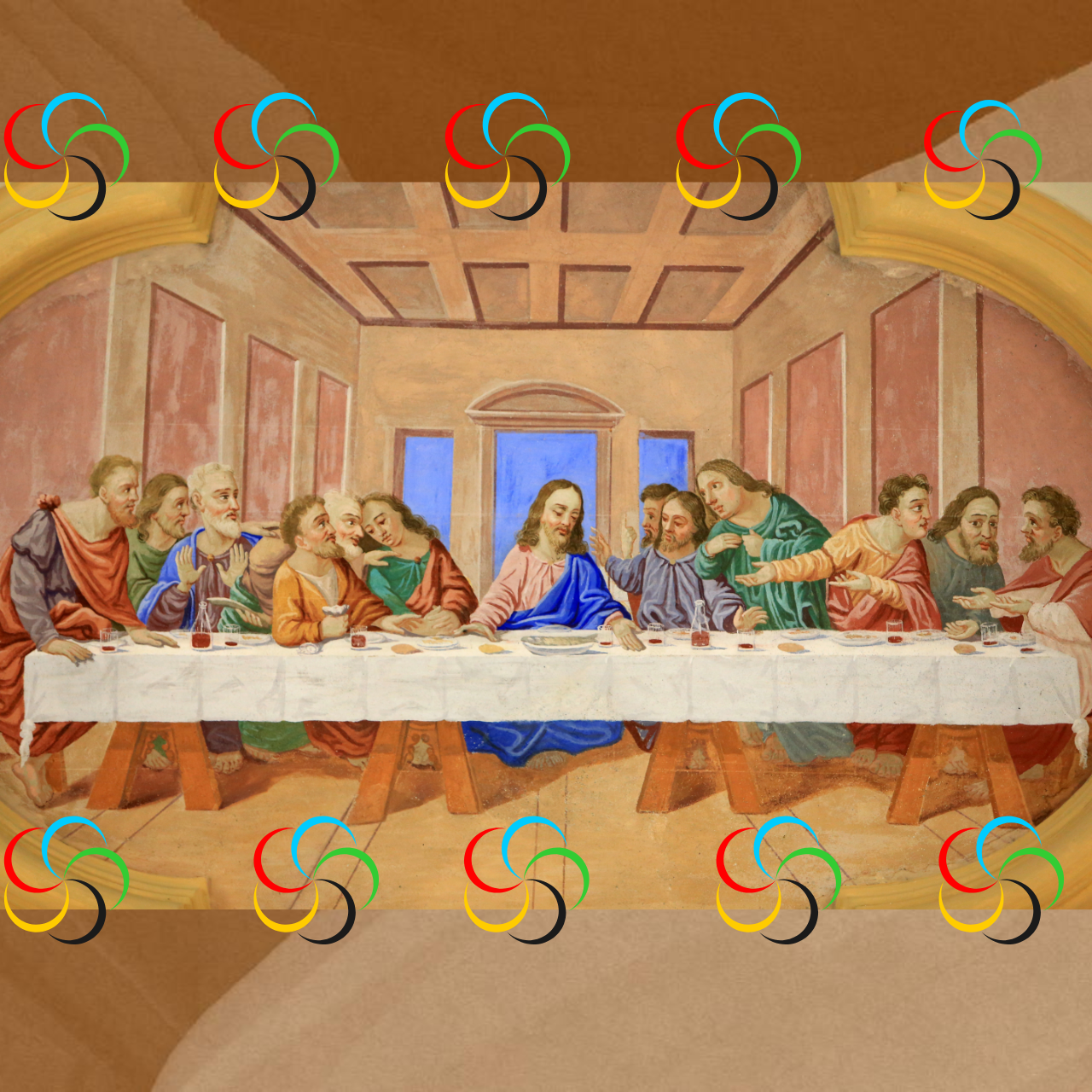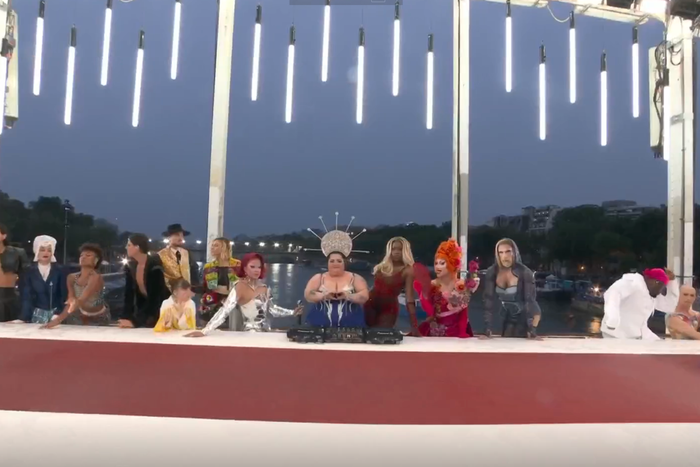
Introduction: A Tradition Under Fire
As I watched the opening ceremony of the Olympic Games last Friday, July 26, 2024, I was surprised by what was being portrayed on my television screen. Never before had I seen such blatant anti-Christ imagery in such a ceremony. In the London Olympics, we saw the depiction of a bull which some persons interpreted as the worshipping of Baal, a false god, mentioned in the Bible. In my opinion, this was far worse.
The Olympic Games, an international sporting event celebrated every 4 years, trace their roots back to ancient Greece in 776 BC. The modern Olympics revived in 1896, were envisioned as a celebration of human athleticism and unity. The opening ceremony of the 2024 Paris Olympics has ignited a global firestorm, with many accusing the organizers of crossing a line into sacrilege and cultural insensitivity.
Historically, the Olympics have been a platform for nations to assemble to showcase their culture and values. In the past controversies have arisen over political statements or athlete protests, but the outrage sparked by the Paris 2024 ceremony is unprecedented.
A Glimpse into French Culture
France is renowned for its art, culture, and philosophy, and has often been at the forefront of pushing societal boundaries. The national motto of France, with origins in the French Revolution, translated to English is, “Liberty, Equality, Fraternity”. The nation’s secular ethos has shaped how it approaches religion and public expression. According to the persons responsible for the display, the aim was to reflect this spirit, while presenting a modern and progressive image of France.
The Ceremony: A Controversial Showcase
The heart of the controversy lies in specific elements of the opening ceremony, deemed offensive by many viewers. Critics argue that the spectacle was not merely an artistic expression, but a deliberate provocation designed to challenge traditional values and ridicule specific groups of people. Some aspects of the ceremony that people found offensive are outlined below:
Sacrilegious Imagery: Several scenes within the ceremony were perceived as mocking Christian symbolism. The most contentious element involved depicting the Last Supper, a central Christian ceremony, in a contemporary and provocative context. It is said to have depicted Jesus Christ as a woman and men dressed as women as the 12 disciples. This, coupled with other symbolic representations, led to accusations of blasphemy.
Sexualization and Nudity – Lack of Family Friendliness: The ceremony featured elements of nudity, sexual suggestiveness, and content and potentially disturbing imagery which many viewers, especially families with children, found inappropriate. Many parents expressed disappointment that they were forced to shield their children from certain segments.
Bloodiness and Destruction: The depiction of a headless woman with her chopped-off head in her lap was revolting to some. It was said to be a depiction of Maie Antoinette, the last Queen of France before the Revolution, who is said to be a complex and often misunderstood figure.
Political Undertones: Some critics stated that certain segments carried political messages, blurring the lines between art, ceremony, and activism. Some vloggers even pointed out that some countries were not properly highlighted during the boat parade and that there was a disparity in how the athletes from some countries were treated compared to those from other countries.
The Last Supper: A Cornerstone of Christian Faith
The Last Supper, a pivotal event in Christian theology, marks the final meal Jesus shared with his twelve apostles before his crucifixion. As recounted in the Gospels this gathering took place during the Jewish Passover, a significant religious observance commemorating the liberation of the Israelites from Egyptian slavery.
For Christians, the Last Supper holds profound spiritual significance as it was during that event that Jesus instituted the Holy Communion or the Lord’s Supper. This sacrament is central to Christian worship, symbolizing the body and blood of Christ. By partaking in the bread and wine, Christians commemorate Jesus’ sacrifice and renew their covenant with God periodically. It is regarded as a very solemn ceremony and is described in four books of the New Testament: Matthew 26:17-29, Mark 14:12-25, Luke 22:7-38, and 1 Corinthians 11:23-25.
The celebration of the Holy Communion varies among Christian denominations. While the core elements remain the same – bread and wine representing the body and blood of Christ – the frequency, rituals, and theological interpretations differ. Some churches observe Communion weekly, while others do so monthly or on specific holy days. This celebration is to be continued in anticipation of the joys of the banquet that is to come in the Kingdom of God. The Last Supper is not merely a historical event but a living tradition. It serves as a focal point for Christian unity, an inspiration to be circumspect, a reminder of God’s love, and a source of spiritual nourishment.
The Outrage Over the Depiction of the Last Supper
The Paris 2024 Olympics opening ceremony took a controversial approach to reinterpreting the Last Supper. Why did so many people find it outrageous? Rather than a reverent portrayal, the event presented a modern and provocative take on the biblical scene. The inclusion of drag performers and other unconventional elements sparked outrage among many viewers, who saw it as a blatant disrespect for Christian beliefs. In the Last Supper Painting the fourth disciple to the right of Jesus is shown holding out his arm towards Jesus. In the Olympics’ depiction that person is shown with his arm extended away from the central figure. You may wonder what is the significance of that seemingly small detail. We could interpret the disciple in the painting as pointing people to Jesus. In contrast, the figure in the depiction of the Olympics opening ceremony’s Last Supper Parody is pointing them away. That seemed to be the central theme of that part of the spectacle.
While the organizers initially defended the performance as an artistic expression intended to provoke thought and debate, the backlash highlights the sensitive nature of religious symbolism and the challenges of balancing creative freedom with cultural sensitivities, and later some participants admitted that the scene indeed, depicted the Last Supper. It also shows that the inclusion was not as innocent as some wanted to label it. The controversy surrounding the Last Supper reimagining underscores the complex relationship between art, religion, and society. It raises questions about the appropriate boundaries of artistic expression and the impact of such performances on public perception.
A Celebration of “Equality” That Offended Many
The opening ceremony of the Paris 2024 Olympics featured artistic and cultural performances, which were supposed to be inclusive and diverse. Instead, it resulted in several segments of global society feeling alienated and disrespected, according to reports. One highlight was a performance by Christine and the Queens, an openly queer French musician, who expressed themes of love and acceptance in their act. The ceremony, directed by Thomas Jolly, also included a choreography segment that some viewers interpreted as a celebration of LGBTQ+ rights (Paris 2024 Olympics) (Wikipedia).
The ceremony sparked a mix of reactions on social media and in mainstream media. Some praised the inclusive representation of the spectacle, appreciating the creative approach taken for the first outdoor Olympic opening ceremony along the Seine. However, many reactions were more critical, focusing on perceived political overtones and questioning the appropriateness of certain themes in the context of a global sporting event (Paris 2024 Olympics) (Wikipedia).
A Wave of Outrage
The backlash against the opening ceremony was swift and widespread. Social media platforms were flooded with angry comments and calls for athletes to refuse to participate. Some people, including French people, expressed that they would boycott the Olympics by not attending or viewing it on television. Religious groups, particularly Christian organizations, condemned the event as a blatant attack on their faith.
Social Media Firestorm: Hashtags such as #ParisOlympicsOutrage and #Blasphemy trended globally as users expressed their disappointment and anger.
Religious Protests: Churches and religious leaders organized protests and issued statements condemning the ceremony.
Boycott Calls: Some individuals and groups called for a boycott of French products and tourism in response to the perceived insult.
The Organizers’ Response
Faced with a global outcry, the organizers of the Paris Olympics issued a statement defending the artistic vision of the ceremony. They emphasized that the intention had been to provoke thought and debate while celebrating diversity and inclusivity. However, they acknowledged the concerns raised and promised to review the feedback.
The artistic director responsible for the ceremony defended their choices, claiming that the intention was not to offend but to challenge preconceived notions and stimulate conversation. They emphasized the importance of artistic freedom and the right to interpret cultural symbols in innovative ways.
Potential Long-Term Effects of the Paris Olympics Opening Ceremony Controversy
The controversy surrounding the Paris Olympics opening ceremony could have several long-term implications:
1. Deepening Cultural and Religious Divisions
Polarization: The event may have exacerbated existing divisions between secular and religious groups, potentially leading to further polarization.
Erosion of Trust: The public’s trust in institutions like the Olympics, often seen as unifying forces, may be eroded.
2. Impact on Artistic Freedom
Increased Scrutiny: Future artistic endeavors may face heightened scrutiny, potentially leading to self-censorship or a stifling of creative expression.
Shift in Artistic Approaches: Artists may feel pressured to avoid controversial topics or adopt more conservative approaches.
3. Religious Influence on Public Discourse
Strengthened Religious Voices: The controversy could empower religious groups to exert greater influence on public policy and cultural debates.
Backlash Against Religious Expression: Conversely, it could lead to a backlash against religious expression, particularly in secular societies.
4. Changes in Olympic Values
Re-evaluation of Olympic Ideals: The International Olympic Committee (IOC) may be compelled to re-examine its core values and guidelines for future ceremonies.
Increased Emphasis on Cultural Sensitivity: Future Olympics may prioritize cultural sensitivity and avoid themes that could be perceived as offensive.
5. Global Dialogue on Religion and Art
Stimulating Debate: The controversy could spark broader discussions about the intersection of religion, art, and public space. The discussions should examine how some groups are being disenfranchised and discriminated against in the name of inclusiveness.
New Perspectives: It may lead to a greater understanding of varying cultural and religious perspectives.
Ultimately, the long-term effects of this controversy will depend on how it is addressed by various stakeholders, including the IOC, religious leaders, and the general public.
Conclusion: A Divided World
The Paris Olympics opening ceremony has become a cultural flashpoint, highlighting deep divisions within society on issues of religion, art, and morality. While the organizers defended their creative vision, the controversy underscores the challenges of balancing artistic expression with respect for diverse beliefs and values. Is this a case of excluding some to be inclusive of others? Where will this end? Will there ever be equality? Remember, the Bible warns that Christians will be persecuted. It has happened before, is ongoing in some countries, and will become more widespread globally. As the world continues to evolve, finding common ground on such sensitive issues will remain a complex and ongoing challenge.

